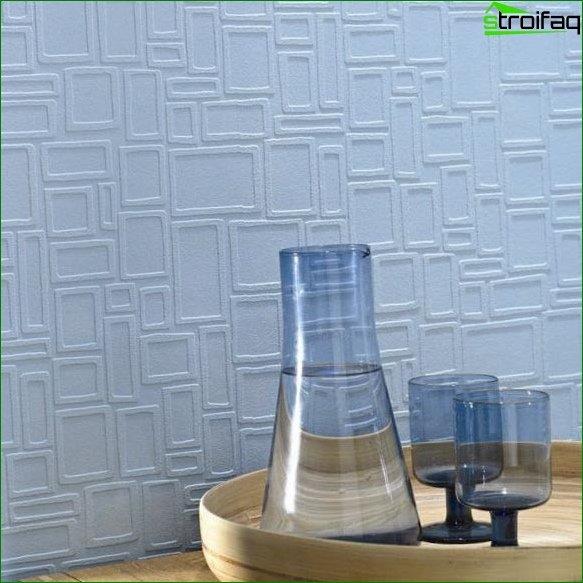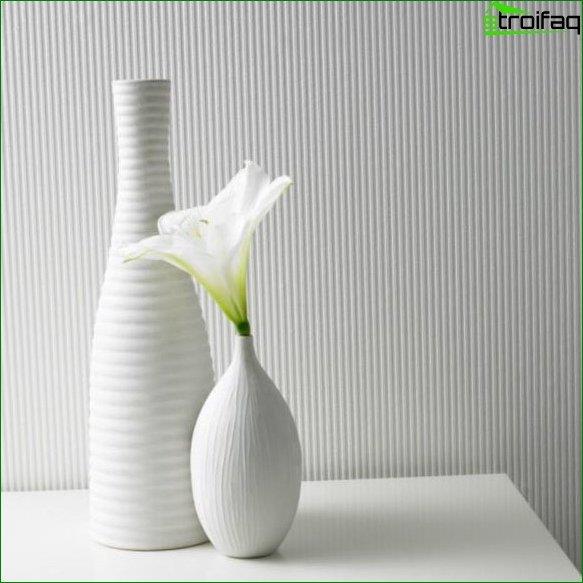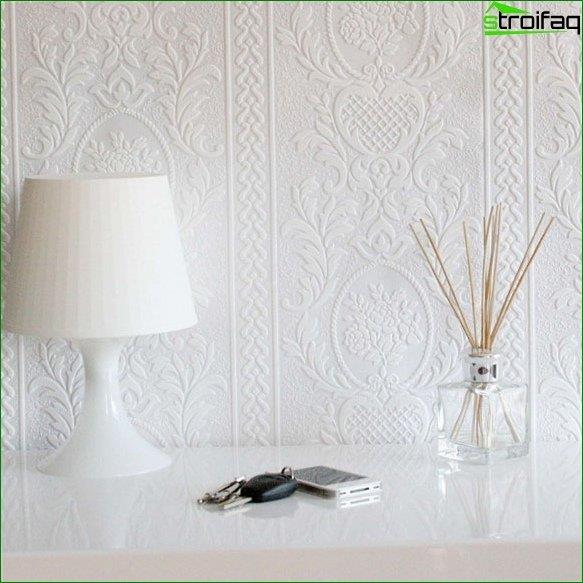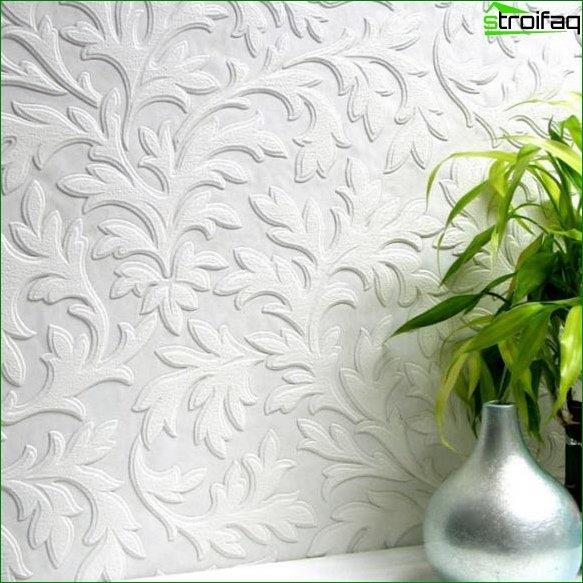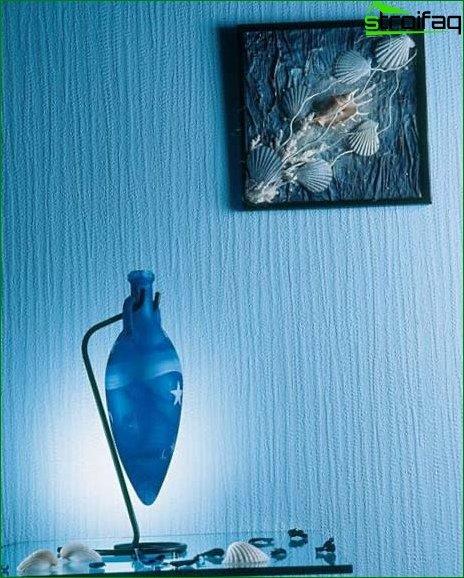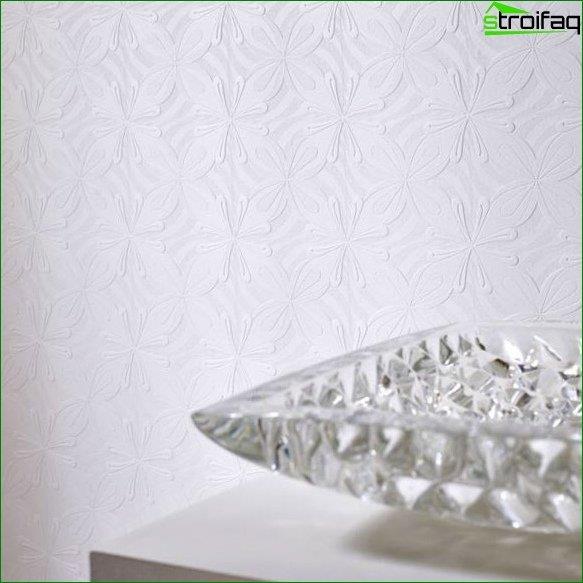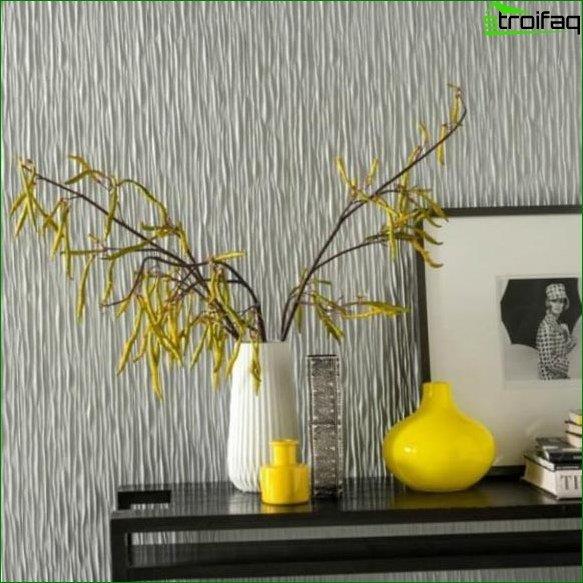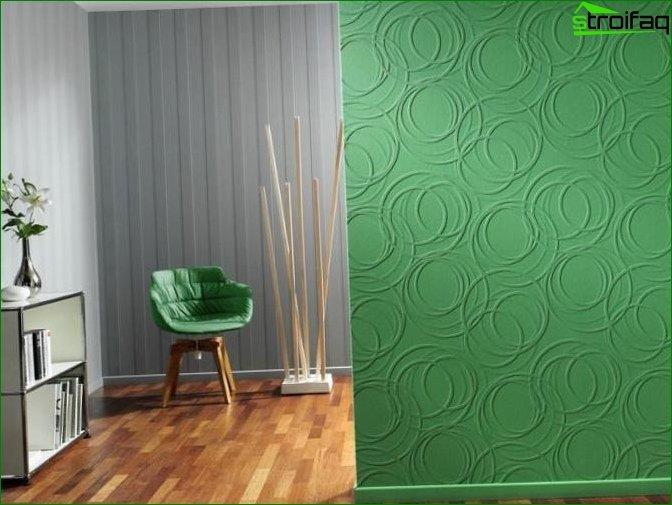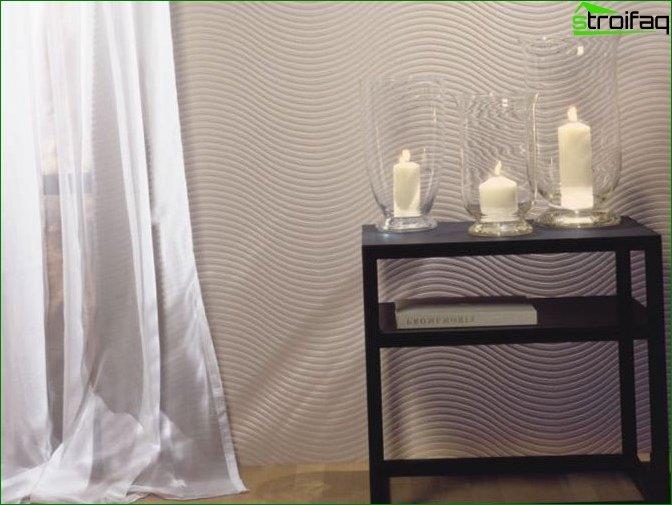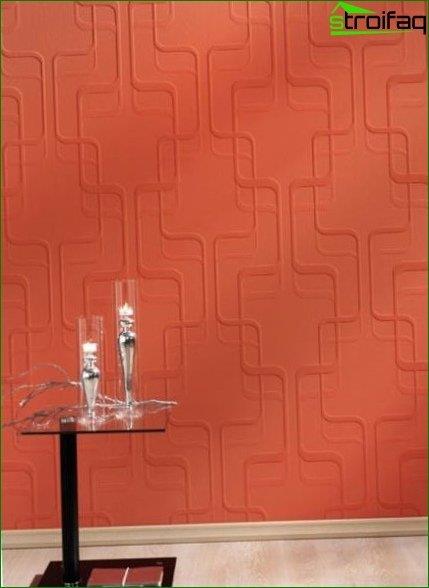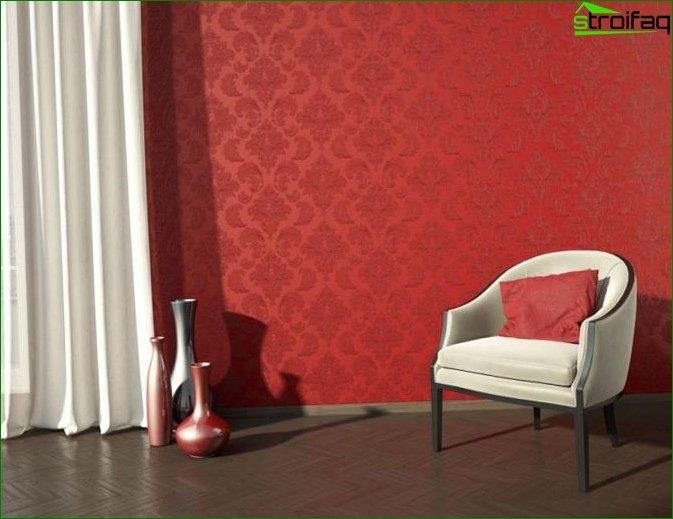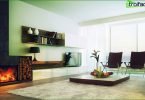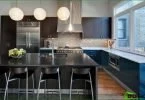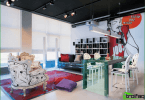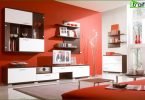80 best ideas for decorating with wallpaper. Combination of colors, sticking and painting yourself.
Probably everyone knows the feeling when you want to change the interior without much effort. Or, when you want to create a textured wall design, and the size of the room does not allow you to roam. What can help in this case? Wallpaper and paint! And the amazing result of this combination you can evaluate in the photo below.
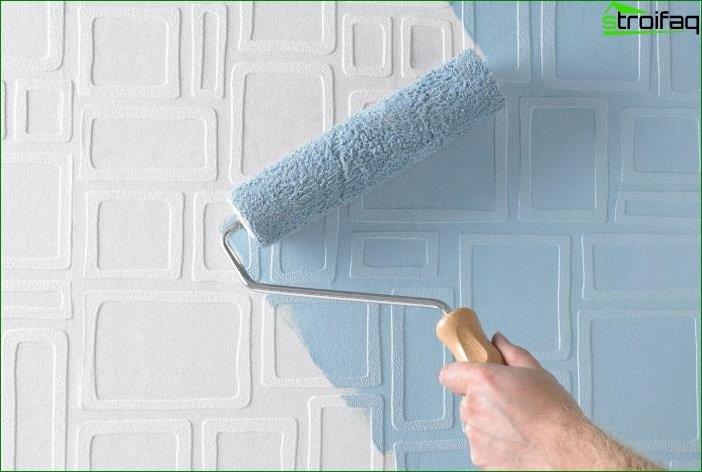
Content
- 2.1.Paper based wallpapers
- 2.2.Non-woven wallpaper
- 2.3.Fiberglass Wallpaper
- 3.How to decorate the interior using such wallpapers with your own hands?
- 4.Combine color
- five.Wallpaper for painting in the interior of rooms for various purposes
- 5.1.In the living room
- 5.2.In the bedroom
- 5.3.In the nursery
- 5.4.In the kitchen
- 5.5.In the hall
- 6.Wallpaper in the interior: more ideas
The delights of using wallpaper for painting
Modern manufacturers of finishing materials offer a wide variety of options for decorating walls – plasters, paints, wallpapers, liquid wallpapers, panels, etc. You can always pick up something that you will have not only to taste, but also to your wallet..
Painted walls are a fashion trend of recent years. If you use paint, you have the opportunity to paint your home in the perfect shade (whether it be at least the color of spiked wheat in the rays of dawn, or at least the color of a stormy sky in July in Barcelona – the main thing is to turn to a catalog or an experienced consultant on coloring and choosing a paint). However, if you do not use textured plasters, the painted walls will simply be smooth, not interesting. In addition, the paint does not even minimally perform the function of heat and sound insulation..
Wallpaper makes the walls not so cold, easy to use. However, you can only choose from what the manufacturers will offer (with the exception of photo wallpaper developed on an individual project). And if you want to change the design of the room or its color scheme, you will have to go through the entire repair process according to the new one – remove old wallpaper and putty, plaster the walls again, paste new ones …
What to choose if advantages and disadvantages are both there and there? One of the options for overcoming such a difficult task may be the choice of special wallpaper for painting.
Thanks to the wallpaper you can change the color scheme in your home up to 7 times!
Apply a fresh coat of paint – and get an updated interior without much effort and cost. The walls will not be boring and “bare” due to the texture of the wallpaper. In addition, it will be much better to keep the heat in the room.
What wallpaper for painting is better to use?
Not every wallpaper can be painted. Ordinary wallpapers, when you try to paint them, begin to bubble, peel off, become sour. Therefore, only special.
There are three main types of wallpaper for painting:
- cullets;
- non-woven;
- paper.
As a rule, all of them are white or light neutral shades..
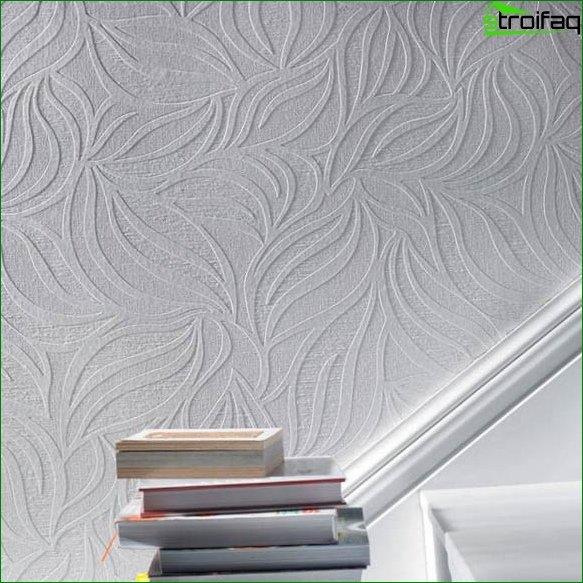
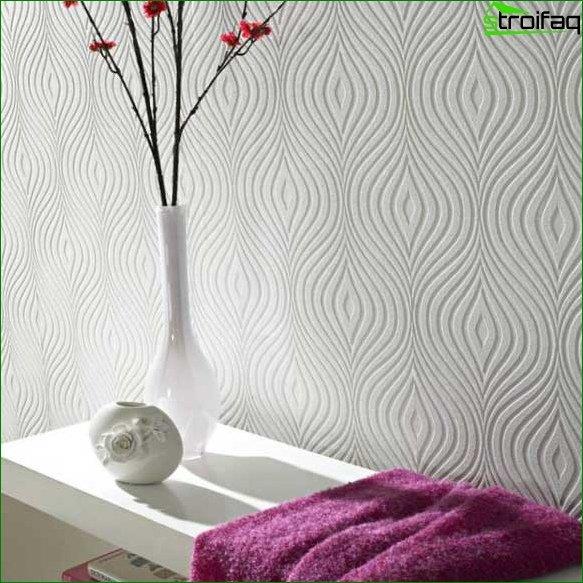
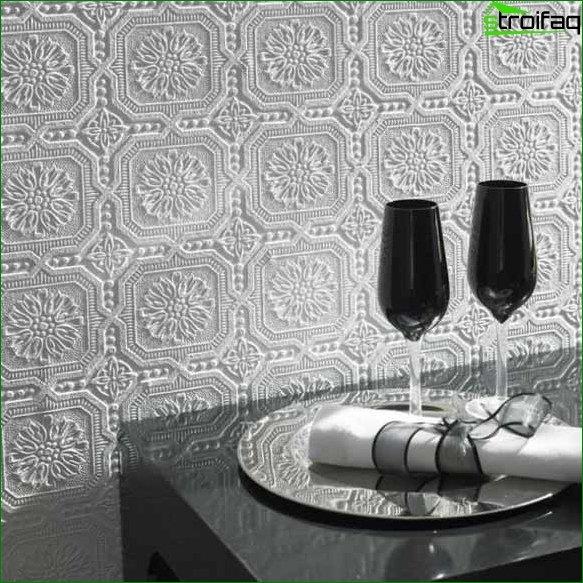
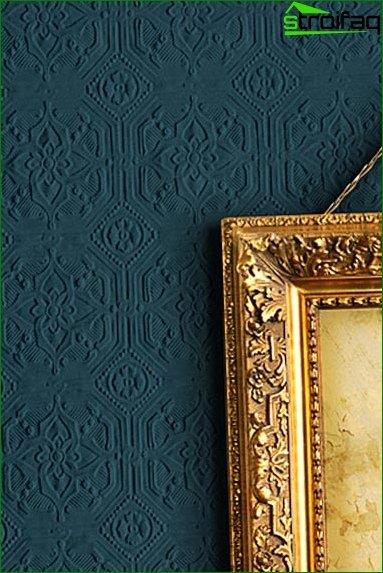
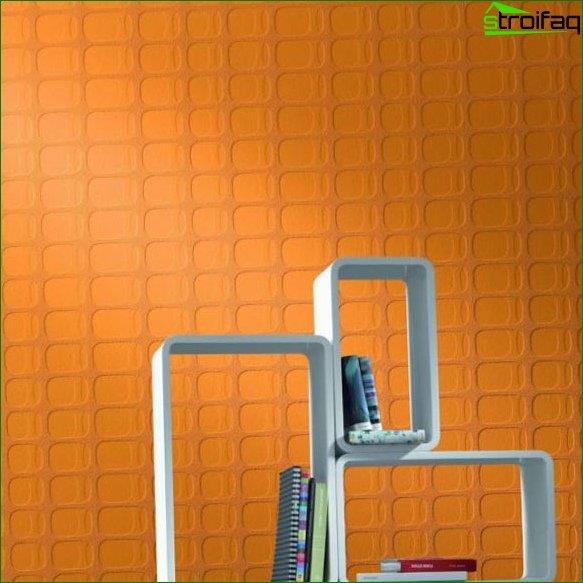
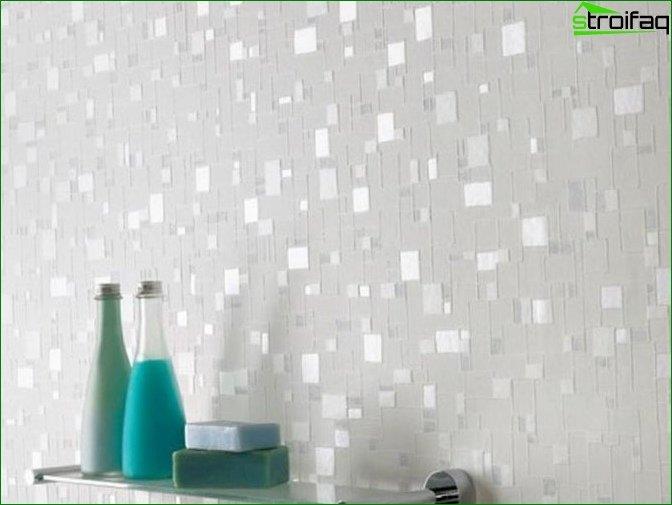
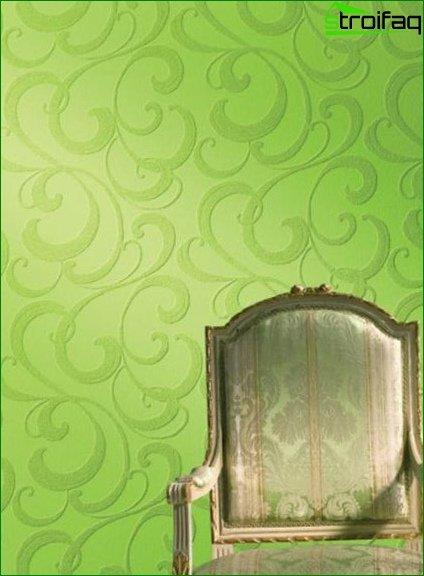
For the manufacture of these types of wallpapers, fundamentally different materials and technologies are used, as a result of which materials for decorating the walls are different in properties and feasible tasks. That is why different types of wallpaper for painting so significantly differ in density and cost per roll.
| Type of wallpaper | Density | Cost |
| paper | 95-135 g / m² | 10-15 $ / roll |
| non-woven | 100-150 g / m² | 12-18 $ / roll |
| cullet | 110-265 g / m² | 15-25 $ / roll |
Paper based wallpapers
Paper wallpaper is the very first type of wallpaper for painting. They easily stick even to a surface imperfect in terms of smoothness. As a rule, they consist of two layers, in contrast to ordinary paper wallpapers – thicker and more durable. In order that the wallpaper does not bubble and does not lag behind the walls during the first and subsequent painting, they are impregnated with a special water-repellent agent. Using paper wallpaper for painting, it’s convenient to decorate not only the walls, but also the ceiling.
Non-woven wallpaper
Non-woven, unlike the paper base for wallpaper, is an order of magnitude denser and stronger. In addition, his undoubted advantage is that he does not crease. Using stencils, foamed vinyl is applied to the non-woven wallpaper, so this wall covering is distinguished by a special relief and a variety of textures.
When choosing non-woven wallpaper for painting, pay attention to the quality of the vinyl. Vinyl spraying is very fragile and the lower its quality, the more likely it is to get scratched or go away during gluing.
The main advantages of this type of wallpaper:
- durable;
- smooth out all irregularities;
- restrain wall cracks.
Therefore, when creating interiors in new buildings, specialists use them precisely: because of the so-called “shrinkage of walls” of new houses, cracks and irregularities often appear on them, and non-woven wallpaper due to its structure will not only not tear, but even help to contain a flaw and not give creep on him further.
Unlike ordinary non-woven vinyl-coated wallpaper, non-woven wallpaper for painting, after applying a protective layer of paint on them, is much less scratched.
Fiberglass Wallpaper
Fiberglass yarns or fiberglass as a basis for wallpaper began to be used relatively recently. They are mainly in demand in the production of photo wallpaper.
Fiberglass threads are made from lime, quartz sand, dolomite and soda, after which they are integrated on a paper basis. Such wallpapers can have a different structure and density (from 110 g / m2 to 265 g / m2). Threads can be intertwined in the most fantasy patterns and reliefs, among which the most popular are rhombuses, cobwebs, Christmas tree and matting. This type of wallpaper is incredibly strong and durable, so its price is justified.
If you are afraid of the cost of a roll of cullet for painting, remember how much money you will save in the long term for updating the interior of the room.
Even frequent washing with cleaning products and brushes is not a problem for them! This is an excellent choice not only for residential premises, but also for office. They are easy enough to glue, but you will have to glue them right the first time: tearing off the glass from the wall is not an easy task.
How to decorate the interior using such wallpapers with your own hands?
There is nothing in the world that could not be done with one’s own hands. This applies to the self-decoration of the premises using wallpaper for painting. Moreover, self-gluing of wallpaper for painting has a very significant plus: the repair team, working with wallpaper for painting, takes a double payment – separately for gluing and separately for painting.
Wallpaper for painting is glued just like usual. How to glue wallpaper correctly – look at the video below.
For painting, you will need: a roller, a ditch (or any container in which the roller is placed), brushes, masking tape, containers for diluting paints and polyethylene (to protect furniture and other items).
When choosing a paint – remember that for each type of wallpaper it is different. It is better to paint paper and non-woven wallpaper with water-based paint. Acrylic or latex paint is suitable for fiberglass wallpaper..
The need to wash the wallpaper in the future must be considered precisely at the stage of choosing paint.
The first time the wallpaper must be painted twice with an interval of at least 60 minutes.
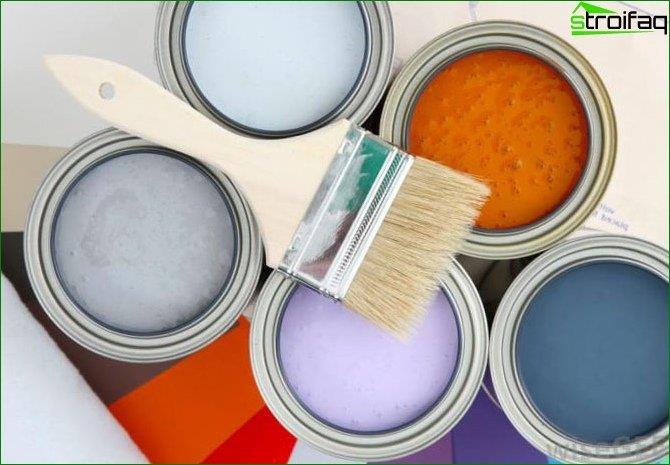

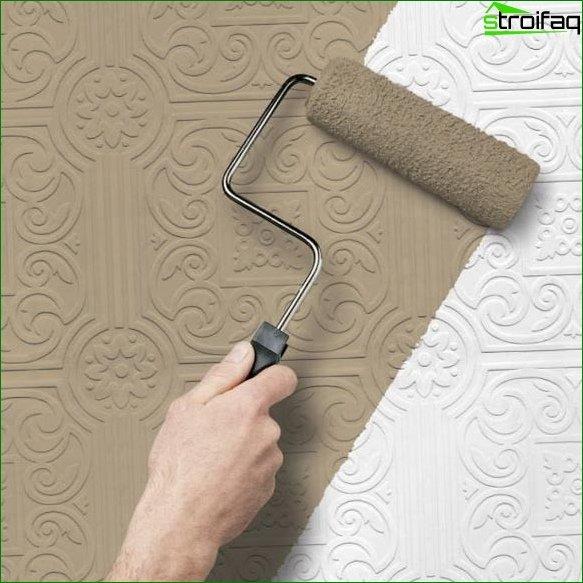
The more paints your wallpapers survive, the less their texture will be noticeable.
If you combine 2 or more colors, draw the borders of the colors with a brush.
The optimum temperature for painting is from 17 to 22 degrees Celsius.
More recommendations on how to paint the wallpaper – below.
Combine color
You can combine different colors for decorating walls in one interior with different goals:
- create different functional zones within the same room;
- add bright accents;
- as a technique for creating a certain style (for example, pop art);
- express your creative nature, striving to be creative.
Agree, with factory wallpapers it is much harder to do..
The main answer to the question “How to paint the walls in several colors” – carefully! Even the most fantastic drawing, made “like a chicken paw” will not only not impress, but will repel anyone in your room.
There are also some more important nuances when painting walls with two colors (three, or more).
Firstly, the combination of colors can be of three types:
- A combination of related shades: blue and mint, beige and gray, etc..
- Gradient combination, that is, a combination of tones of the same color, different in their saturation.
- A combination of different, opposite colors: red with green, blue with orange, yellow with purple, etc..
When choosing contrasting colors, experts recommend focusing on their temperature, saturation, “sound” – they should be similar. For example, orange orange is better combined with dark green, and peach orange – with olive green. If you do not have the colorist talent, do not combine more than two colors yourself.
The most correct rule when choosing combinable colors: choose colors that are naturally found in combination!
Secondly, think in advance how the color combination will take shape.
To create even borders, use masking tape. If for some reason you cannot purchase it, the joints can be made out using a paper border, wooden battens, mosaics, poleuritan moldings, etc. For these purposes, reliable glue or liquid nails are quite suitable..
If the protruding angle combines the colors, install an aluminum profile on it. This will not only make the joint neat, but also prevent the destruction of the angle in the future.
Thirdly, be sure to buy paint with a margin! If you yourself create the necessary shade with the help of pigment – do it with a large supply of paint, because if the paint runs out, it is practically impossible to achieve an identical shade a second time.
What technologies do not exist for painting walls in two colors!
The simplest and most common is the horizontal separation of colors (that is, when one color is placed on top of another). Traditionally, the walls are painted so that the lower shade occupies approximately one third of the height of the wall, and the upper – two three. This, as they say, is a classic. In addition, it is very similar to decorating the bottom of the wall with panels. However, no one forces you to follow it and you can fully express your imagination by drawing a color line in the middle, upper part of the wall (lower color – 2/3 of the wall and upper color – 1/3 of the wall) or almost under the ceiling. Such coloring will look appropriate in children’s or ultra-modern interiors..
Along with the horizontal color section, you can use the vertical one. How to set boundaries – it’s up to you. You can highlight one wall with color, or you can highlight several functional areas, alternating colors. In this case, it is better to use one light, light, neutral color, and one more saturated or bright. Using gradient staining, the boundaries of the functional areas will be softer. You can paint each wall in a separate tone of the same color – this will also be considered a gradient. Such staining will be appropriate, for example, in the bedroom.
If the design of your walls involves niches or ledges, you can very well highlight them and emphasize with the help of color. Accents can be made using colors 2-4 tones lighter or darker than the base. You can also “draw” panels on the wall. To do this, just stick masking tape on the walls already painted with the base color so that inside you get squares, rectangles or circles – it all depends on your imagination!
Striping coloring looks interesting in the interior. It can be one horizontal strip across the room or many vertical narrow stripes. The work is painstaking, but the effect is amazing!
The wider the strip – the less troubles with sticking tape!
Well, if you are already a very creative person, you can decorate your walls with the help of curly coloring. Figuredness can manifest itself in the most unexpected way – from the design of the borders of colors with a wave or zigzag, to the application of colored peas, rhombuses or even full-fledged graffiti-style drawings on the walls..
Wallpaper for painting in the interior of rooms for various purposes
In the living room
Making repairs in the living room, You can follow the most fashionable trends and fashion trends. This room is not just the heart of your housing, it is his face, which will evaluate and perceive you as well. However, in pursuit of the trend, do not forget that your guests should be pleased to be in the room.
More about choosing a wallpaper for the living room read here.
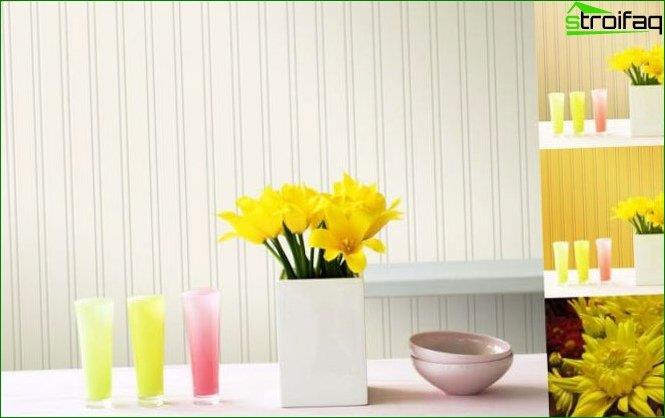
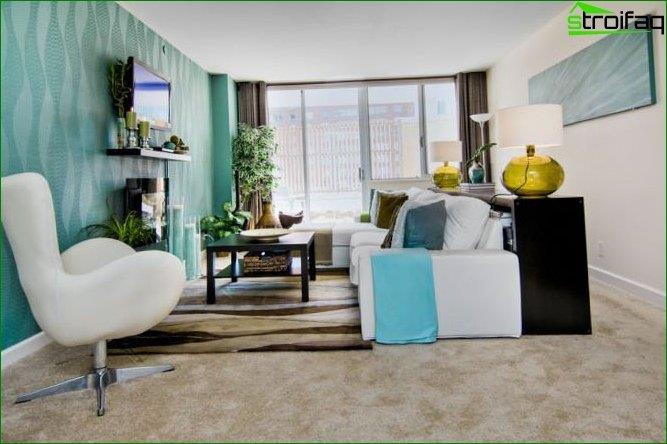
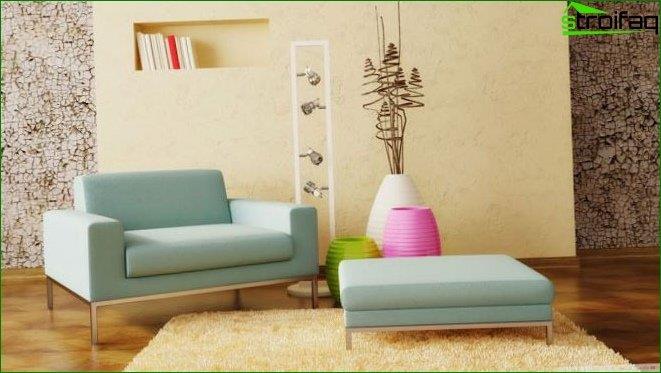
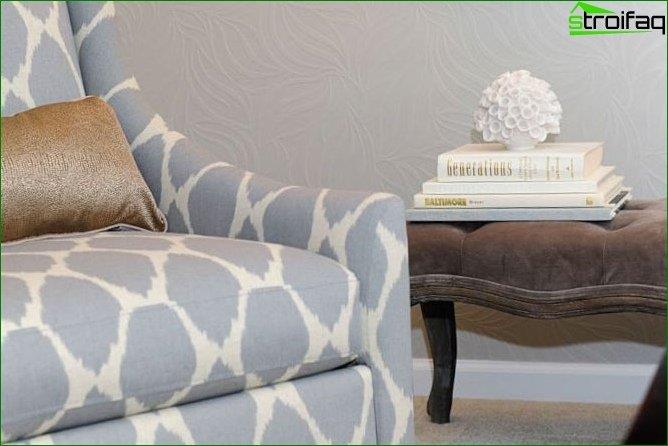
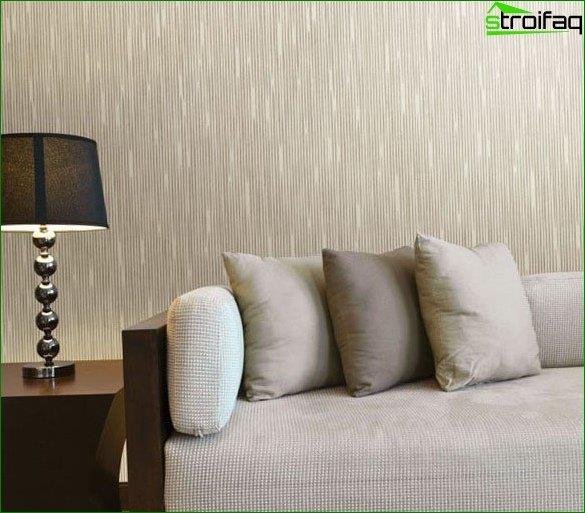
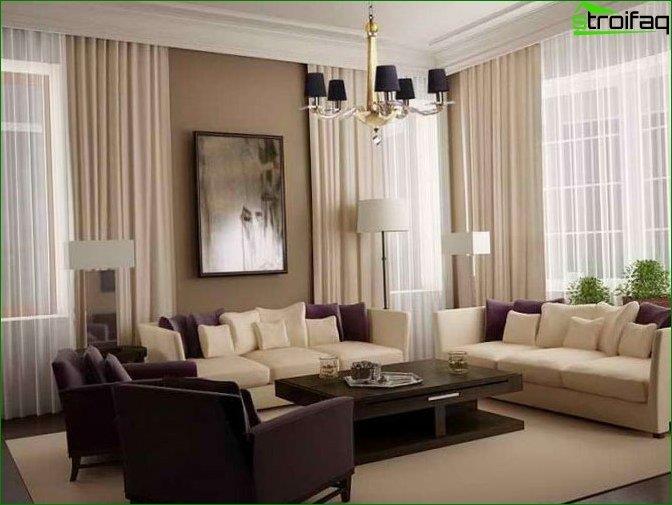
In the bedroom
Unlike the living room, bedroom Must be tailored exclusively to your tastes and needs. This room should not be the object of interest of strangers. The bedroom is a place of relaxation, therefore, when painting wallpaper for painting, it is better to choose more calm, pastel shades, and with the help of bright colors, make accents, for example, emphasizing niches or drawing panels.
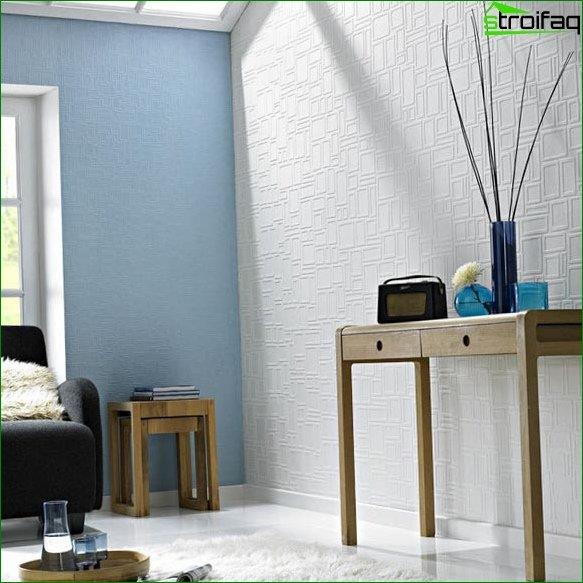
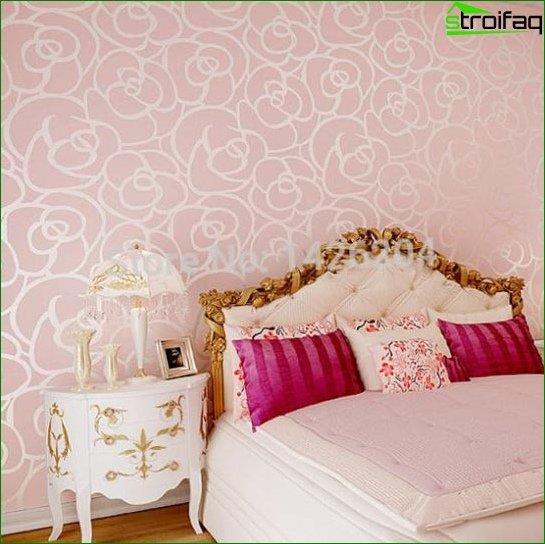
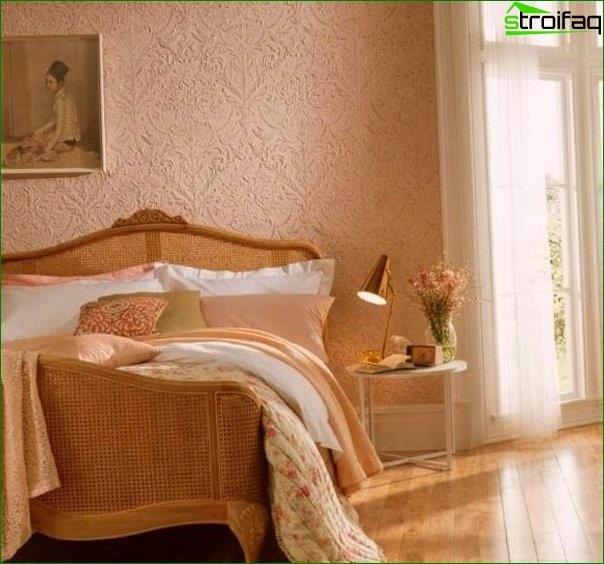
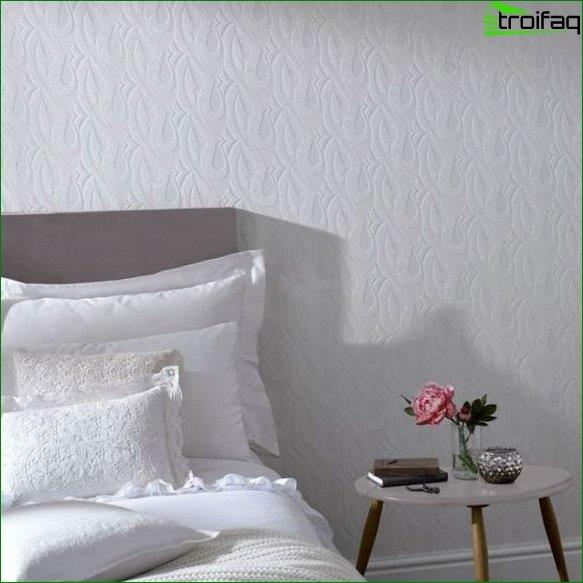
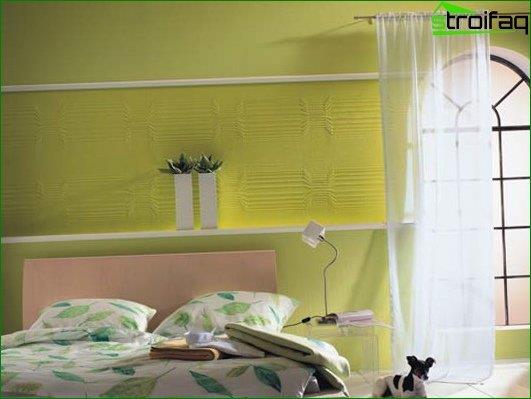

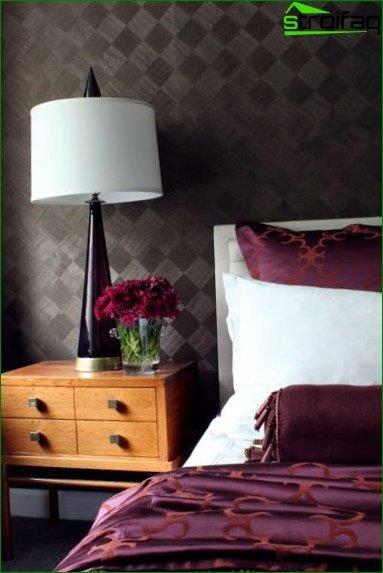
In the nursery
Children’s room is a real paradise for a riot of fantasy! It is here that it is allowed to apply the most incredible forms, colors, painting techniques, because the children’s room must be interesting!
Wallpaper for painting – ideal for kids room, because even when a child begins the age of “drawing on wallpaper” this will not become a problem – you can repaint these wallpapers at any time, instead of re-sticking them for a long time. Moreover, there are even special coloring wallpapers with small images of cartoon characters, which are not only possible, but also need to be decorated. Well, or you can just leave one wall white so that you can draw on it. Believe me, your child will be satisfied!
Do not forget that the walls in the nursery most likely have to be washed sometimes, so choose a paint intended for washing.
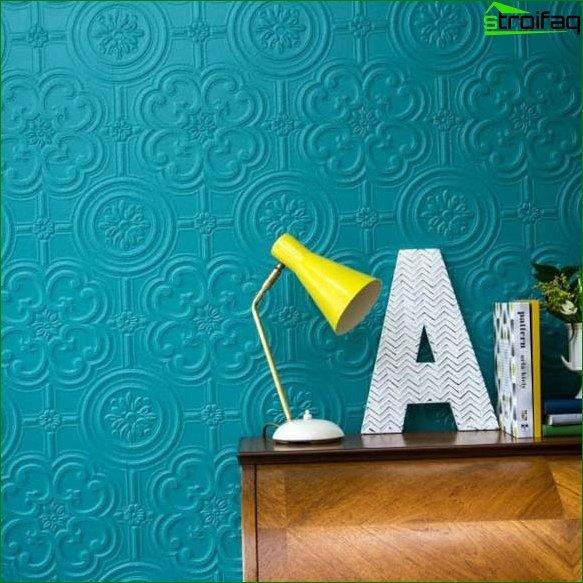
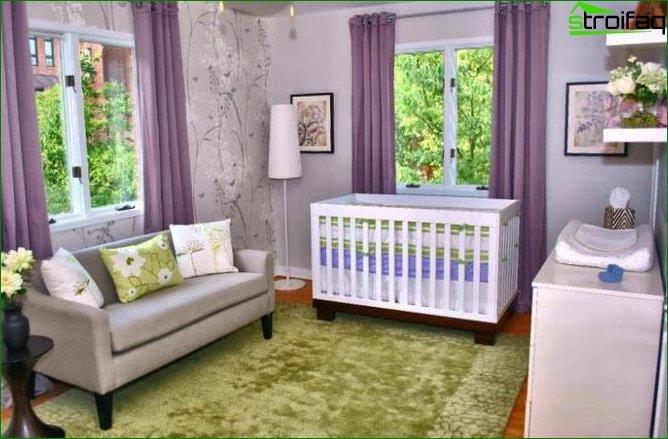
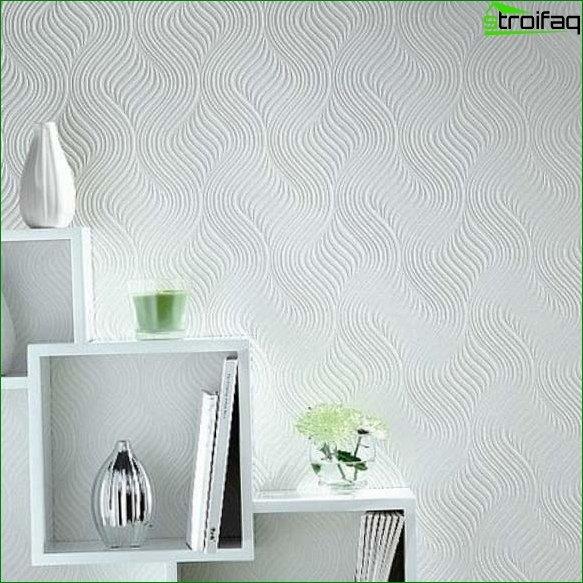
In the kitchen
Wallpaper for the kitchen must be as durable as possible, moisture and heat resistant and designed for washing. Therefore, the ideal option – glass.
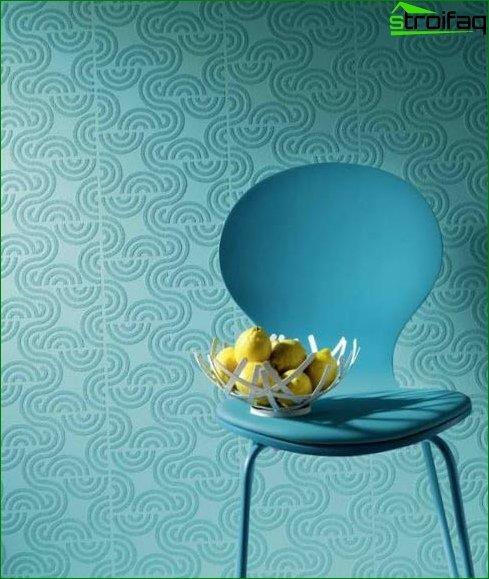
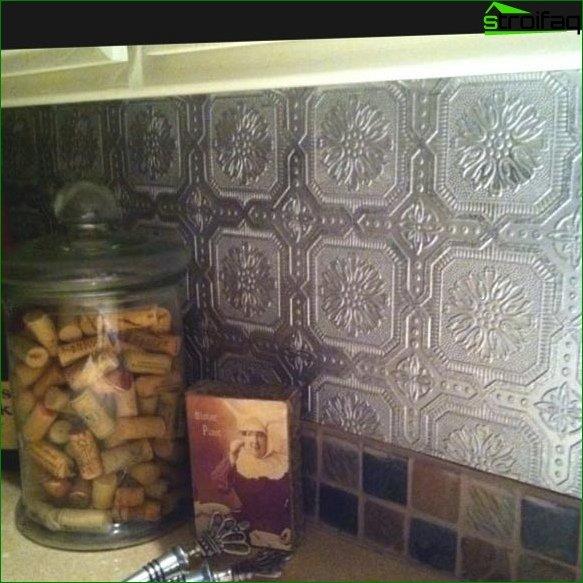
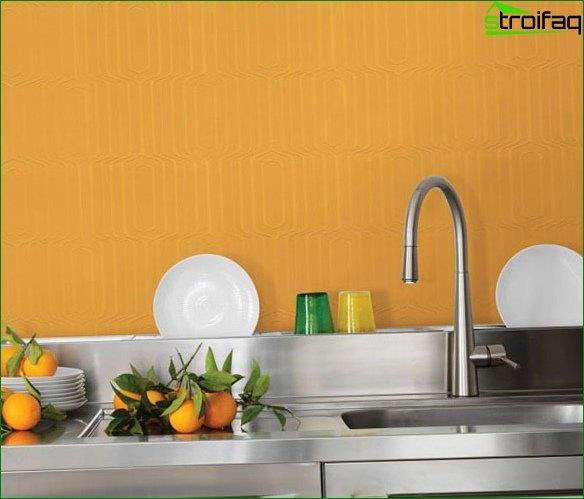
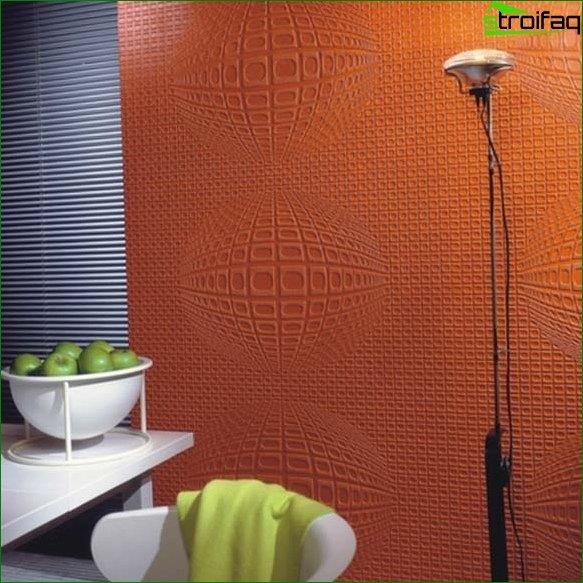
In the hall
Although the walls in the hallway are less affected than in the kitchen, however, a lot of dirt is brought in from the street on shoes and clothes and it settles, primarily on the walls of the corridor. Therefore, it is also advisable to wash them periodically. In addition, if you have a small child and you often walk with a stroller, the wallpaper should be strong enough so as not to spoil from accidental clues.
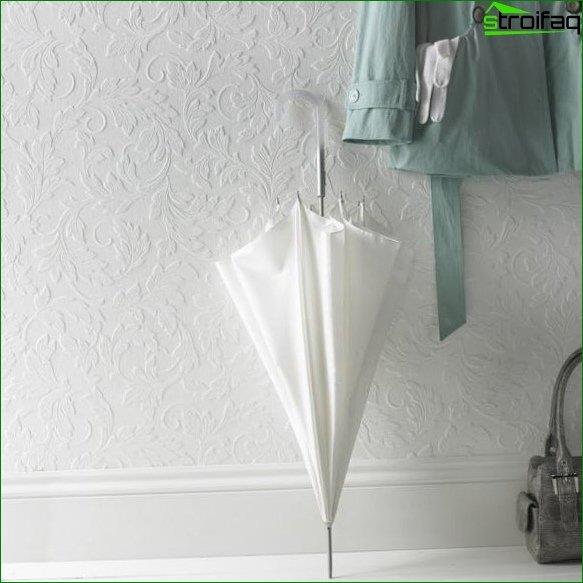
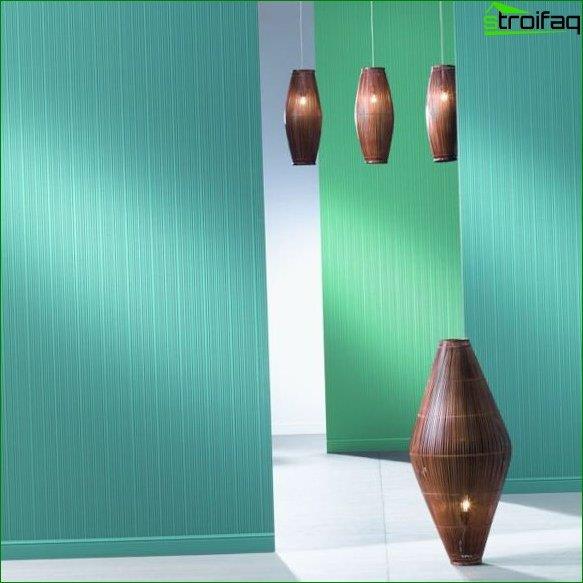
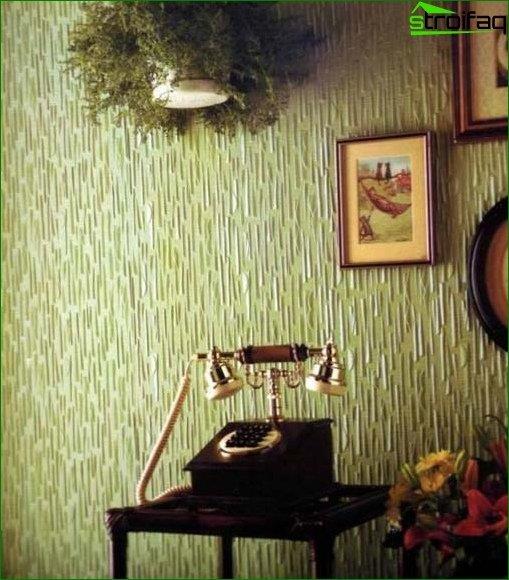
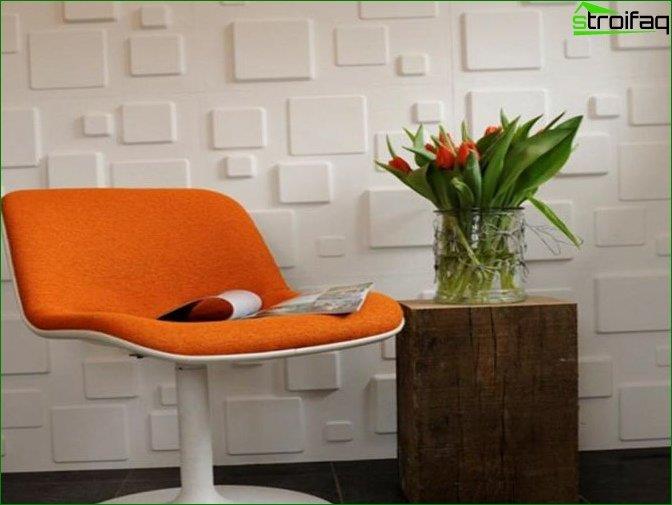

Wallpaper in the interior: more ideas
If you still doubt whether the wallpaper for painting in the interior will look good – pay attention to the photo below.
